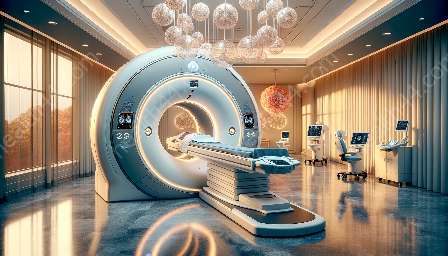Bone densitometers play a crucial role in the field of medical imaging devices and equipment, offering valuable insights into bone health and the diagnosis of conditions such as osteoporosis. This comprehensive topic cluster will take you on a journey through the world of bone densitometers, from their technology and applications to their impact on healthcare and patient outcomes.
The Importance of Bone Densitometers
Bone densitometers are specialized medical devices used to measure the density and strength of bones. They are primarily utilized in the diagnosis and monitoring of conditions such as osteoporosis, a common age-related disease characterized by decreased bone mineral density and increased fracture risk. By providing accurate and precise measurements of bone density, bone densitometers enable healthcare professionals to assess a patient's bone health and make informed decisions regarding treatment and management.
Technological Advancements in Bone Densitometry
Advancements in medical imaging devices have led to significant improvements in bone densitometry technology. Modern bone densitometers utilize dual-energy X-ray absorptiometry (DXA) to measure bone mineral density, offering high precision and reliability. Furthermore, the integration of advanced software and imaging algorithms has enhanced the efficiency and accuracy of bone density measurements, enabling healthcare providers to deliver better patient care.
Applications in Clinical Practice
Beyond osteoporosis management, bone densitometers have extended applications in various medical specialties. For example, they are used in the assessment of bone health in postmenopausal women, monitoring the effects of certain medications on bone density, and evaluating fracture risk in patients with chronic conditions. Additionally, bone densitometry plays a crucial role in research studies exploring the impact of lifestyle factors and genetics on bone health and overall well-being.
Integration with Medical Imaging Devices
Bone densitometers are an integral part of the broader spectrum of medical imaging devices. They complement other imaging modalities such as X-ray, computed tomography (CT), and magnetic resonance imaging (MRI) by providing specific information about bone tissue density and composition. This integration enables a comprehensive assessment of musculoskeletal health and facilitates multidisciplinary collaboration among radiologists, endocrinologists, orthopedic surgeons, and primary care physicians.
Impact on Patient Outcomes
The use of bone densitometers has significantly improved patient outcomes by enabling early detection and intervention in individuals at risk of osteoporosis-related fractures. Timely assessment of bone mineral density allows healthcare providers to implement preventive measures, such as lifestyle modifications, nutritional supplementation, and pharmacological interventions, to reduce the likelihood of fractures and preserve overall bone health. Ultimately, the widespread availability of bone densitometry contributes to enhanced quality of life and reduced healthcare costs associated with osteoporosis-related complications.
Future Directions and Innovations
The future of bone densitometry is characterized by ongoing research and development aimed at further enhancing the capabilities of these medical imaging devices. Emerging technologies, such as quantitative ultrasound and high-resolution peripheral quantitative computed tomography, hold promise for expanding the scope of bone densitometry beyond traditional DXA measurements. Moreover, advancements in data analytics and artificial intelligence are expected to streamline the interpretation of bone density scans and facilitate personalized risk assessment and treatment recommendations.
Conclusion
As the cornerstone of medical imaging devices and equipment, bone densitometers play a pivotal role in the assessment and management of bone health. Their contributions to the early detection of osteoporosis and associated complications have significant implications for public health and individual well-being. By staying abreast of technological advancements and embracing a multidisciplinary approach, healthcare professionals can harness the full potential of bone densitometers to optimize patient care and outcomes.


